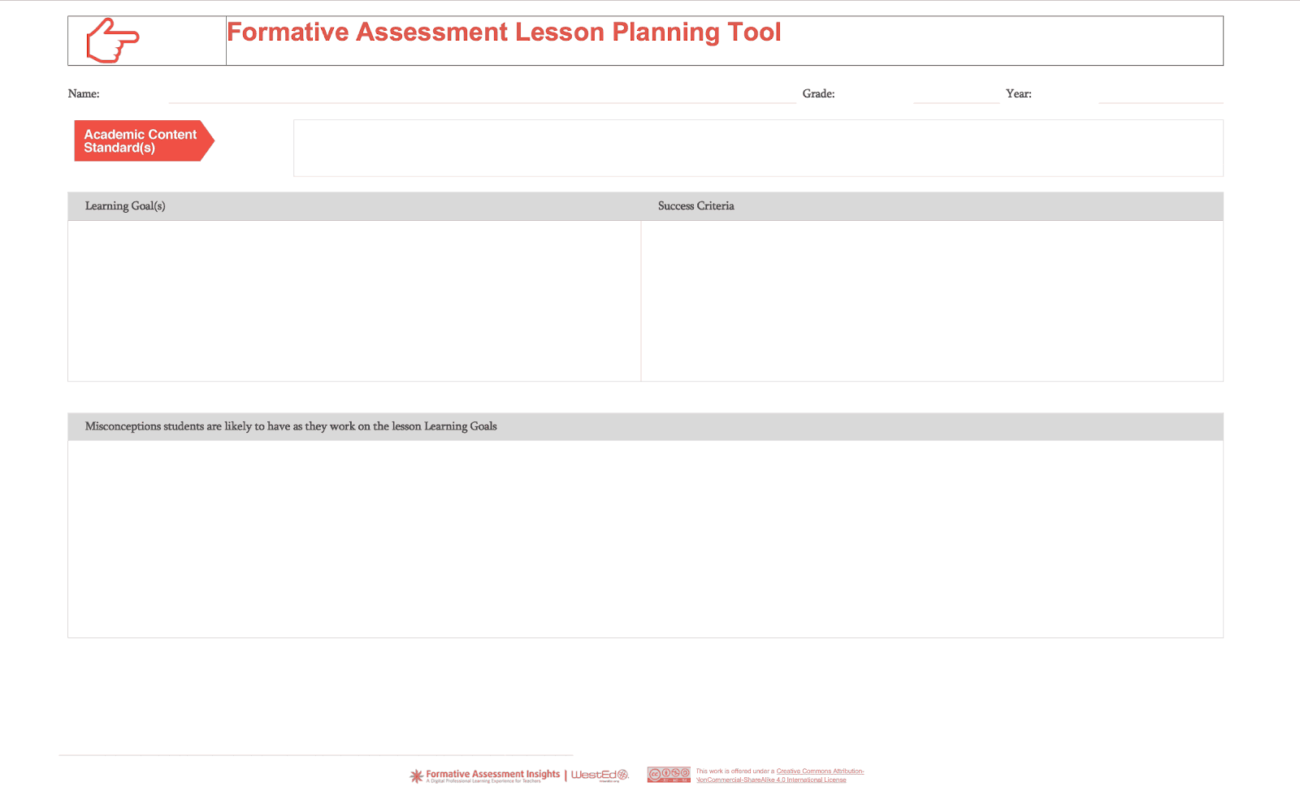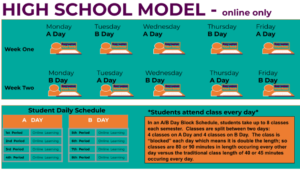Professional Learning Through the Plan, Observe, Debrief (POD) Model

By Denise Stringer and Mary Ryerse
The vast majority of teachers (90% in one study) indicate that collaboration is beneficial to improving their practice. However, many yearn for structures and systems to make that process more focused and effective without being cumbersome.
Teachers in Tulsa Public Schools have found a process that helps to do just that by participating in the Plan, Observe, Debrief (POD) model of professional learning to help advance formative assessment practice in their classrooms.
They are doing so as part of the How I Know: Designing Meaningful Formative Assessment project, an initiative of the Michael & Susan Dell Foundation. Led by WestEd School Improvement Facilitators Patricia Dienz and Angie Julian, the POD Cycle includes collaborative lesson planning, observations, and collective (peer and leader-led) reflections on practice.
The POD Cycle
The plan, observe, debrief process is used to improve professional practice along several dimensions, with the ultimate goal of improving teaching and learning. During POD cycles, teachers engage in numerous collaborative processes, including but not limited to:
- collaborating with peers to develop lessons that integrate formative assessment practice,
- receiving feedback on their formative assessment lesson plans from coaches and peers,
- engaging in peer/coach observation of the lessons they collaboratively developed,
- engaging in individual or group reflection of their formative assessment lesson,
- reflecting with peers and leaders, and
- planning next steps based on feedback.
One great aspect of how POD cycles work is that teachers do not need to share content expertise to support each other through the POD. For example, teachers at Will Rogers College Junior High and High School in Tulsa are part of a POD team that represents 5 different content departments and several grade levels 6-11. Having a diverse team with different expertise allows for reflective problem solving and feedback without assumptions and an “over-offering” of information.
POD cycles typically take place over three days:
Day 1: Plan
On the first day, teachers participate in a collaborative review of their course module content and lesson planning, with a focus on implementing formative assessment practices. Teachers engage in a review or “mini-lesson” focused on content learned through a formative assessment course.
Day 2: Observe
On the second day, the lessons planned on day one are implemented, and observed by peers, leaders, and (in this school’s case) the WestEd coach.
Day 3: Debrief
On the third day, there is a collaborative debrief session, where teachers explore what they learned during the observations, and set goals to improve their formative assessment practices moving forward. This group reflection is grounded in the FARROP dimensions of formative assessment practice.
POD Cycle Comes to Life in Zoo Lesson
At Mitchell Elementary School in Tulsa, the team collaborated to incorporate peer feedback into a Pre-K lesson. At first, this seemed overwhelming and almost like asking too much of four and five-year-old students. However, with help from the team and the POD Lesson Planning Template (below), Pre-K teacher Jacqueline Beavers planned and implemented a successful lesson on zoo animals with her students. This example, detailed below, illustrates that peer feedback can be used successfully at any age.
Overview
The class was preparing for a field trip to the zoo, so Mrs. Beaver wanted to integrate zoo animals into her reading lesson. The goal of this lesson was for student to identify initial sounds and letters of words and then to write the letters independently. Together, the team developed, reflected on and revised a plan multiple times, and was eventually able to reflect on what made the lesson so successful and how these elements could be incorporated into their own lessons moving forward.
Plan
The team reflected and revised the plan several times, refining the conditions and steps necessary to have students provide feedback to each other. Careful attention was paid to the types of animals that would provide initial sounds that students already knew. For example, what would happen if a student chose an animal with an unknown blend as the initial sound?
Through this discussion and reflection, the lesson was precisely planned to use pictures to introduce the words in a way that would scaffold the words so that students were not working with too many unknown sounds/letters at a time. There was also careful reflection about where the students would sit for the activity (e.g. rug or tables), how students would be paired, how evidence would be collected, and how Mrs. Beaver would provide feedback to students throughout the lesson.
Observe
The coach and collaborating teachers who observed the lesson (often, it is a subset of the group that observes the lesson due to schedule/availability) paid close attention. During the lesson, they saw students sat on the rug with their partners and whiteboards. Students practiced identifying zoo animal names and identifying the initial sound and letter. Students would say the sound, identify the letter, and then write the letter on their whiteboard. Student partners gave confirming or corrective feedback while Mrs. Beaver circulated the room collecting evidence of learning from the partners. Students were engaged, collaborative, and taking risks in their new roles as “teachers.” Coach and teacher observers noted what they saw throughout.
Debrief
After the lesson, teachers brought back their notes and reflections to give feedback on the lesson and to discuss areas of the lesson that could be replicated in their own classrooms. This discussion is critical so that the observed teacher can reflect on their lesson, but also so that the observing teachers can reflect on how they can incorporate elements of the lessons into their classrooms. This often generates great conversations about what formative assessment looks like in different classrooms–what’s the same and what is different.
It Starts with Planning
One useful tool teams use is this Formative Assessment Lesson Planning Tool that WestEd has created. It includes fields to outline content standards, learning goals, success criteria, and evidence gathering (showing what students and teachers are doing at the start, middle and end of each lesson). This tool also provides a great framework for teams to use as they provide feedback to each other (click the images below to access full-resolution versions of these tools).
With processes such as POD cycles in place, teachers rave about the impact of professional development. As we discussed this impact, Denise reflected “It is really inspiring to see the power of collaboration, peer feedback and reflection come to life in such a dynamic way. It was deep professional learning for all involved, including myself.”
For more, see:
- Scaling Formative Assessment: The How I Know Project
- What is Formative Assessment? Voices from Field
- The Student Role in Formative Assessment: How I Know Practitioner Guide
This post is a part of a series focused on the “How I Know: Designing Meaningful Formative Assessment” initiative sponsored by the Michael & Susan Dell Foundation. See the How I Know website (www.formativeassessmentpractice.org) and join the conversation on Twitter using #HowIKnow or #Formative Assessment
Denise Stringer is a coach for WestEd. Follow her on Twitter at @stringerdenise
Stay in-the-know with all things edtech and innovations in learning by signing up to receive the weekly Smart Update. This post includes mentions of a Getting Smart partner. For a full list of partners, affiliate organizations and all other disclosures, please see our Partner page.







0 Comments
Leave a Comment
Your email address will not be published. All fields are required.